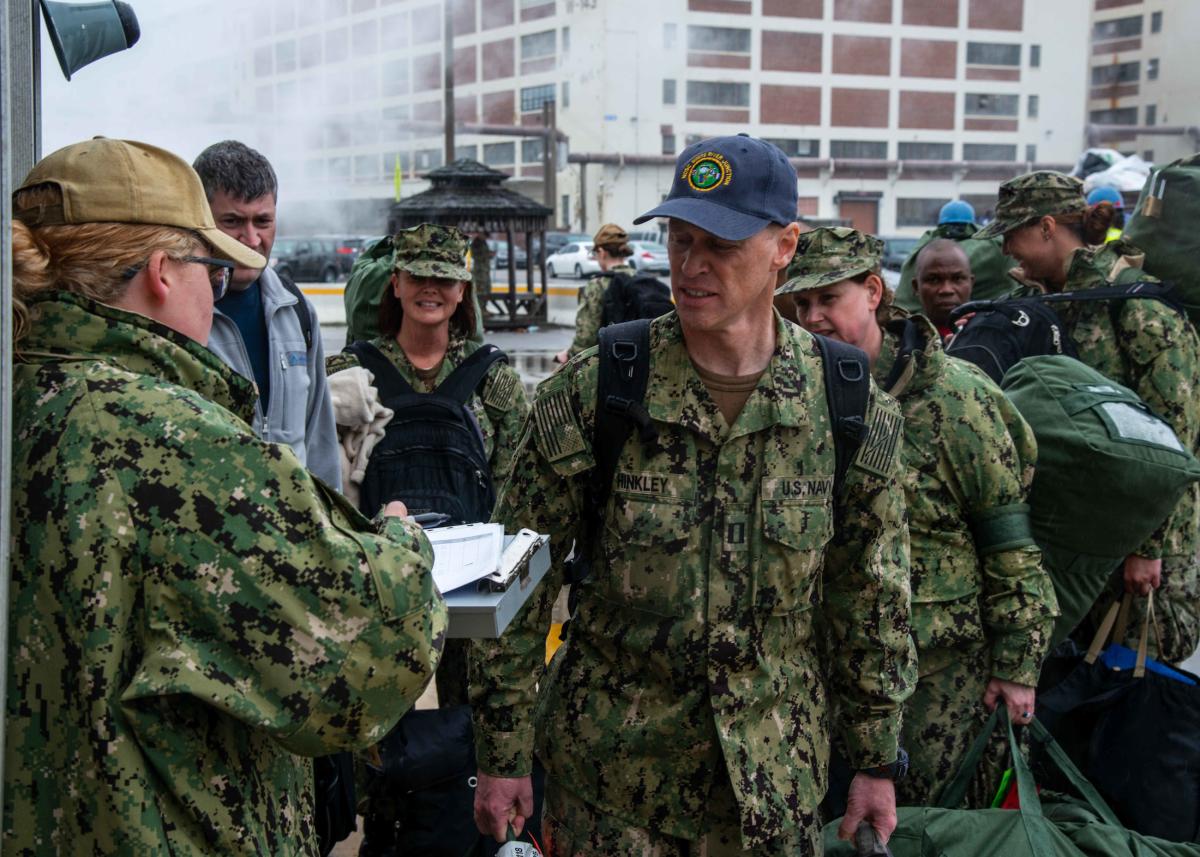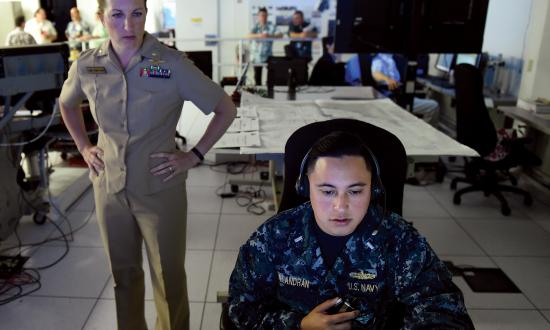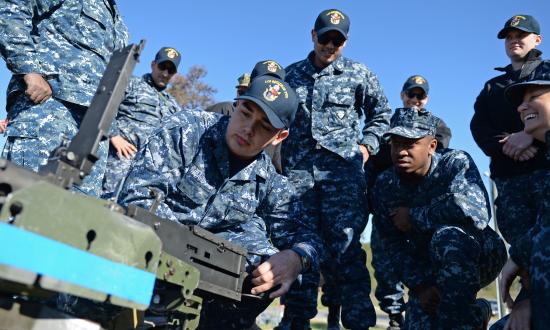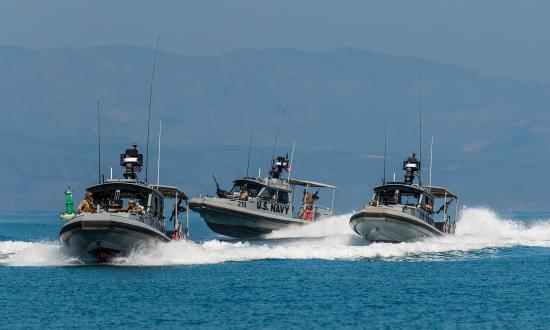The COVID-19 pandemic might be the event that convinces the Navy Reserve to restructure to be better postured for large-scale mobilizations. Early in the pandemic, the Commander, Navy Reserve Forces Command (CNRFC), authorized an exception to policy to allow reserve sailors to mobilize through their Navy Reserve Activities or Navy Operational Support Centers (NOSCs) to expedite their arrival to the USNS Comfort (T-AH-20), which was being sent to New York City. This should be the model going forward.
Currently, however, all mobilizations are processed at Navy Mobilization Processing Site (NMPS) Norfolk, Virginia, which is overseen by the Expeditionary Combat Readiness Center (ECRC).1 NMPS Norfolk processes hundreds of sailors per year and, should a major crisis or conflict occur that requires a large-scale mobilization, will be overwhelmed and become a bottleneck in getting Navy Reserve forces to the fight.
Future Outlook and Implications
As the Navy works to align with the 2018 National Defense Strategy, the ability to rapidly deploy naval forces is an increasing imperative. Given this, the Navy Reserve has been placing greater importance on the ability to quickly deploy reserve sailors to augment the active-duty component during conflict.
In the Pacific theater, the Chinese Navy’s technological development and advances in projecting sea power past the second island chain have demonstrated its resolve to compete with the U.S. Navy and its allies. While both sides may wish to avoid conflict, the risk of miscalculation between the People’s Liberation Army Navy (PLAN) and U.S. Navy is high. If such a miscalculation leads to widespread naval conflict, the United States will be forced to deploy a considerable amount of naval power to the Pacific theater. A war on the Korean peninsula would require the same, as would any number of conceivable naval battles with Russia, within and outside the Pacific theater. Similarly, a conflict between Israel and Iran would likely require a vast movement of Navy assets to the Arabian Gulf.
The Navy Reserve plays a crucial role in many military campaign strategies, and without reserve augmentation, the military would be challenged to execute operations in support of national strategic objectives. More than 228,000 reservists were called to active duty to support Operations Desert Shield and Desert Storm during the first Gulf War. Of those, 19,963 were Navy personnel. Similarly, within the first five months of Operation Enduring Freedom in 2001–2002, the Navy Reserve mobilized more than 10,500 members. There is no reason to believe this amount of reserve manpower would not be required in a future war.
The ECRC is not postured to support such mass mobilizations and would be an impediment to the rapid deployment of a large number of reservists. Effectively transitioning Navy Reserve personnel to full-time active-duty sailors is no small feat, requiring many administrative tasks. It is common for reserve sailors to be delayed in arriving to the conflict theater for up to a week because of medical holds or pay account issues, for example. Assuming a future large-scale naval conflict would require far more reservists than the present ECRC throughput capacity can quickly support, the potential for mass delays cannot be ignored.
A Distributed Mobilization Model
CNFRC, in coordination with Naval Personnel Command and U.S. Fleet Forces Command, should begin a methodical transition to a distributed mobilization model that uses local, geographically disbursed NOSCs. The COVID-19 mobilization proved that the existing NOSC infrastructure can effectively process sailors and get them forward. However, in a mass mobilization scenario to support a conflict abroad, this may not be achievable with the current NOSC structure.
To support a mass mobilization, the NOSCs would require significantly enhanced manpower and personnel system access. They need to be manned with appropriate administrative enlisted ratings (yeomen, personnel specialists, corpsmen) and officer designators from the line and staff corps. CNRFC needs to ensure NOSCs have personnel with the right skills for the heavy administrative lift required to support mobilizations. Customer service and accountability must be the top priority. CNRFC and U.S. Fleet Forces Command should make the reserve mobilization structure mirror the familiar naval warfare decentralized command structure—the composite warfare concept. All administrative, manpower, medical, training, and logistics functions should be able to be accomplished at the NOSC level. Unfortunately, NOSCs lack the capability and capacity to accomplish this task. Simple administrative services such as updating records are limited at NOSCs because of either restricted access for key administrative systems or outdated processes that require single-point-of-failure routing through offices at the Naval Personnel Command. In addition, many NOSCs do not have the right rates in the right billets. Too often, enlisted personnel with shipboard ratings are working in administrative, training, or manpower billets, whether as a stop gap or officially assigned. This is a disadvantage for both the NOSC sailor and the reservists they support.
Fully decentralized mobilization centers with the right manpower, tools, and access, and that use redundant traditional systems to guard against a cyber attack, would be better positioned to ensure the Navy’s reserve warfighters can get to the fight efficiently.
1. Processing through an NMPS was designed for individual augmentees being mobilized to support the war on terrorism in the Middle East and, until demand for reservists declined several years ago, also was done at NMPS San Diego and Gulfport.






